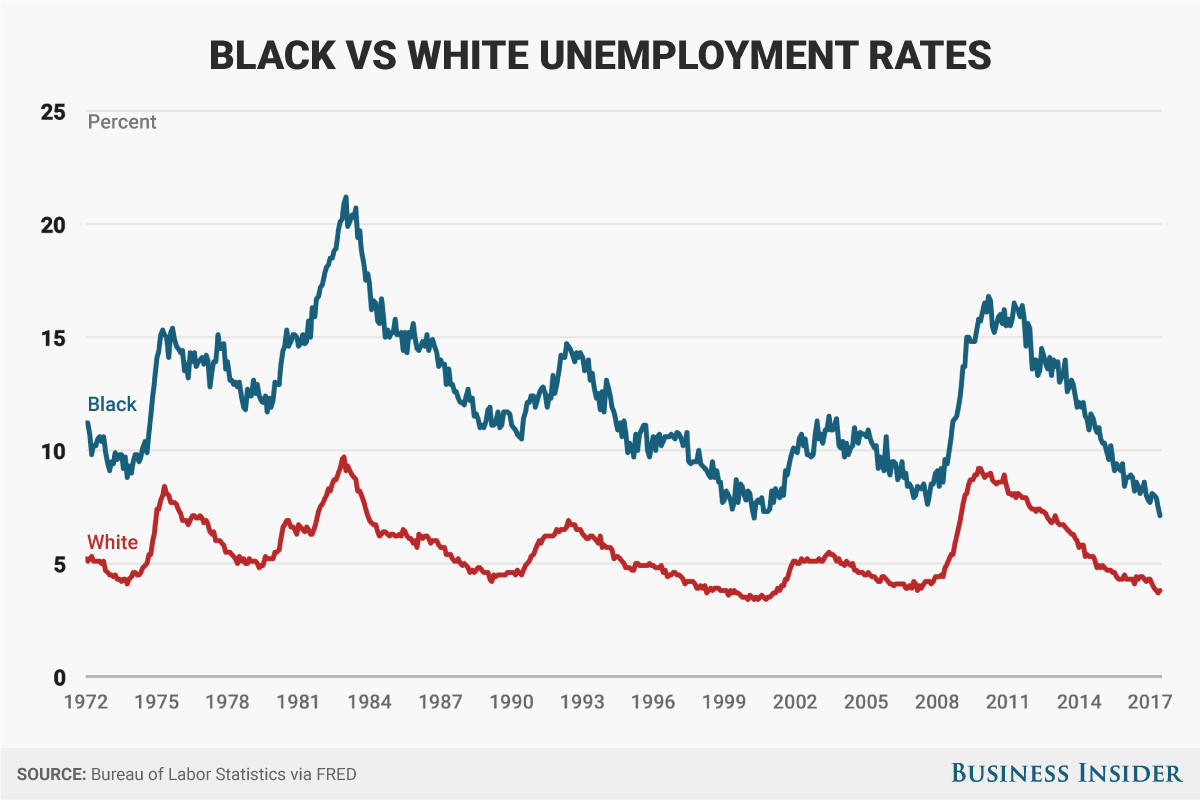The gap between white and black unemployment in America is at a record low

The gap between the black and white unemployment rates in the US shrunk to a record low in June.
According to the Bureau of Labor Statistics, the share of jobless African Americans in the labor force fell to 7.1%, the lowest level since April 2000. It was 1.5 percentage points down from a year ago, and it helped create the smallest gap between white and black employment on record.

Andy Kiersz/Business Insider; data from FRED
"This trend is exactly what we want to see" as the economy gets closer to full employment, said Elise Gould, a senior economist at the Economic Policy Institute. The rebound in available jobs after the recession has attracted millions of Americans back into the labor force. With the unemployment rate back at a post-recession low, the economy is nearer to the theoretical level of full employment, at which everyone who wants a job and can work is employed.
"While the unemployment rates for workers of color remain far higher than for white non-Hispanic workers, the black unemployment rate has been falling faster than overall unemployment over the last year," she said in a statement after the jobs report.
Overall, the US economy added 222,000 jobs in June, more than economists had expected.
Black unemployment, however, remained much higher than the overall unemployment rate of 4.4%, which in June inched up from a 16-year low.
And, it was greater than the white unemployment rate, which at 3.8%, was lower than the overall rate.

Andy Kiersz/Business Insider; data from FRED
RELATED: The 25 highest-paying jobs you can get without a bachelor's degree
NOW WATCH: An economist explains what could happen if Trump pulls the US out of NAFTA
See Also:
